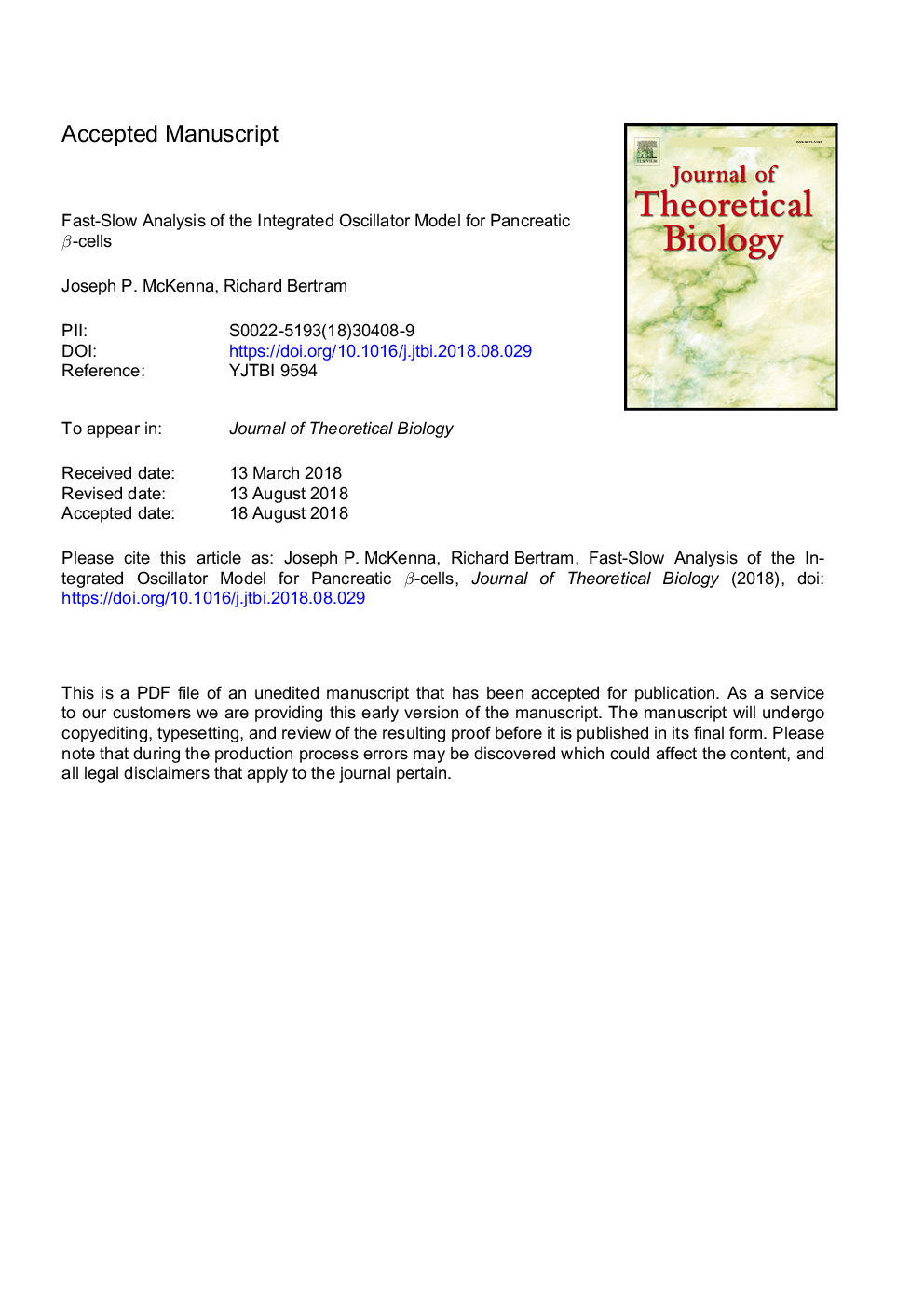| Article ID | Journal | Published Year | Pages | File Type |
|---|---|---|---|---|
| 10138678 | Journal of Theoretical Biology | 2018 | 48 Pages |
Abstract
Oscillator Model (IOM), to highlight the bidirectional coupling involved in the oscillation mechanism. In this study, we show how this coupling can produce oscillations in β-cell activity. These oscillations have period similar to that of insulin secretion pulses observed in rats, mice, dogs, and humans, which has been shown to facilitate the action of the liver in maintaining glucose homeostasis. In a companion paper we show that the IOM can produce oscillations using two distinct mechanisms, depending on the values of electrical and metabolic parameters. In the present article, we use fast-slow analysis to understand the mechanisms underlying each of these oscillations. In particular, we show why a key variable in the glycolytic pathway generates a pulsatile time course in one type of oscillation, while it generates a sawtooth time course in the other type. The significance of these patterns is that the time course is a reflection of whether an intrinsic glycolytic oscillator is active, or whether the oscillations are a direct consequence of Ca2+ feedback onto glycolysis.
Keywords
Related Topics
Life Sciences
Agricultural and Biological Sciences
Agricultural and Biological Sciences (General)
Authors
Joseph P. McKenna, Richard Bertram,
